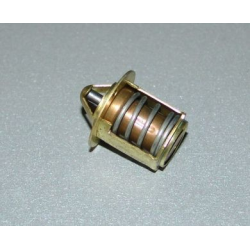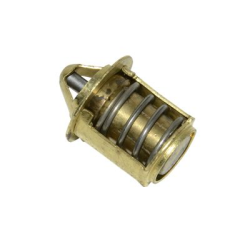The best scooter shop in 2025
Thermostat
Thermostat: Essential for Good Temperature Control
The thermostat in a vehicle is a crucial part of the cooling system. It ensures that the engine remains at the right temperature and prevents overheating or undercooling. In this article, we will discuss where the thermostat is located and where the thermostat's sensor is located, so you can gain a better understanding of this important part of your vehicle.
Where is the thermostat located?
The thermostat is usually located between the engine and the radiator in your vehicle's cooling system. This part plays an important role in regulating the flow of coolant through the engine. The exact location of the thermostat can vary by vehicle, but in most cases, it is built into a metal housing at the front or top of the engine.
-
In engine blocks of cars or scooters, the thermostat is often located close to the water pump, usually on the side of the engine where the coolant leaves the engine. The thermostat opens and closes depending on the temperature of the coolant.
-
For scooters and motorcycles, the thermostat is often easier to reach than in cars, as these vehicles typically have a more compact cooling system.
When the engine is cold, the thermostat remains closed to keep the coolant in the engine and heat the engine quickly. Once the engine is at operating temperature, the thermostat opens and allows coolant to flow through the radiator to maintain the engine at the correct temperature.
Where is the thermostat's sensor located?
The thermostat's sensor, also known as the temperature sensor or coolant temperature sensor, is typically located near the thermostat itself or at another strategic point in the cooling system. This sensor measures the temperature of the coolant and passes this information onto the vehicle's engine management system. Here are some common locations where the thermostat's sensor can be found:
-
Near the thermostat housing: The sensor is often placed on or near the thermostat housing, so it can measure the temperature of the coolant as soon as it flows through the thermostat. This ensures that the system gets accurate information about the temperature of the coolant reaching the radiator.
-
In the coolant circuit: In some vehicles, the sensor is located slightly further in the coolant circuit, for example at the water pump or at the inlet or outlet of the radiator. This helps to check whether the coolant is effectively cooled before it goes back to the engine.
-
In the cylinder head: In some vehicles, the sensor is located directly in the cylinder head, where it can accurately track the temperature of the engine. This location ensures that the sensor can quickly respond to temperature changes and control the thermostat to prevent overheating.
The sensor plays an important role in the cooling system as it helps control the operation of the thermostat and the cooling of the engine. A faulty temperature sensor can lead to inaccurate temperature measurements, causing the thermostat to possibly not open or close at the right time. This can result in overheating or an inefficiently running engine.

 Nederlands
Nederlands

